Teaching intangible subjects like characters is always a challenge. On the other hand, for students, it’s hard to get thoroughly. How to make the worksheet the most effective? Here are some recommendations.
Teaching in traditional ways no longer works with enhanced demand. Children need to know more about the increasingly complicated world. However, they are too distracted to learn. Developing in teaching methods, in particular, in preparing worksheets, is a significant step to take. For teachers at any education level, tutors, and caregivers in special education, creative worksheets help them engage with students.
Character education imposes a challenging area to teach because of its intangible aspect. It’s boring to explain the whole thing by words, but there are no concrete pictures to beautifully wrap the meaning. These free Character education worksheets below are constructing awareness to students by engaging activities through human sense, intuition, and observation. In other words, it provokes learning passively in analyzing surroundings. How do they work, and how to make them by yourself? This article soon explains.

Character Education Worksheet Description and Application
Character education worksheets look like any other worksheets that you use in class or tuck in for homework. The difference is about content which these worksheet means educating about characters. As you know, there are many ways to express a person’s personalities and how they mean those qualities.
Teaching characters should be in the early years of children. It’s virtual knowledge for them to be aware of these qualities to have in-hand social skills for further learning. Also, knowing deeply about characters might lead children to develop the grades they want, to become the version they fancy.
However, the character is a severe category that, even to adults, we can somehow make the wrong impression. It’s easier to discuss and debate even partners among adults to get a vague sense of the topic. Teaching children should be precise at the first shot, or they can get confused.
Character worksheets come with many ideas in conveying the message, expression, and meaning. The method’s purpose is to give children an impression of a character sensibly and relatedly to their surroundings. If the worksheet does the job, children learn about the mentioned character and recognize it in daily practice.
How to conduct such a quality worksheet? It would be best if you referred from age, the personality of students, and the size of the class. It could be group work or a single exercise, but the point is to make students engaged. Here below are some ideas of making and tutorials.
Free Character Education Worksheets
Kindergarten and primary students
#1 making impression – color and notes
We cannot push our luck in the process with small kids but approaching their concerns gently. Colors are always catchy to 3 to 5-year-old, so why not get them some ideas this way. There shouldn’t be a long paragraph but only short slogans that children can color on. Illustrations could be black and white drawings with relating meaning. The purpose is to keep them spending more time with the word and build an impression. You would be surprised how a kid remembers things when they are impressed. Also, it would help if you prioritized drawings and styles that the kids are interested in. And, don’t expect to gain the effect at first but after several times.

#2 Oh, the places you’ll go
It’s a good idea to connect the definitions to the context. You don’t have to tell them how it is but let them freely go with the flow. Worksheet “Oh, the places you’ll go” signals children’s attention about what they are interested in visiting. Whatever they like to do or to be, they will be eager to express.
This worksheet can be modified into different topics, or you can reuse it by changing little details. This worksheet makes children brainstorm on what they think about an idea by provoking their concern. It could be messy to collect and analyze the result, but we cannot ask little kids too much with focus.

#3 make a wish on St. Patrick’s Day
Using St. Patrick’s theme will draw attention to learning time. It’s because the activity reminds children of familiar holidays that are important in their memoir. Depending on the culture you come from, you might want to change the topic name.
The content is around wishes, which refers to character and intangible meanings. Here is to teach children to learn and define the word with their pure heart. You’ll see they make a childish wish, and you can help by suggesting catchier phrases. They will be excited to finish and show to their families so that you succeed in delivering the lessons and make friends with your students. This method promotes cooperation among teachers and children as well as leave people free with their thinking.
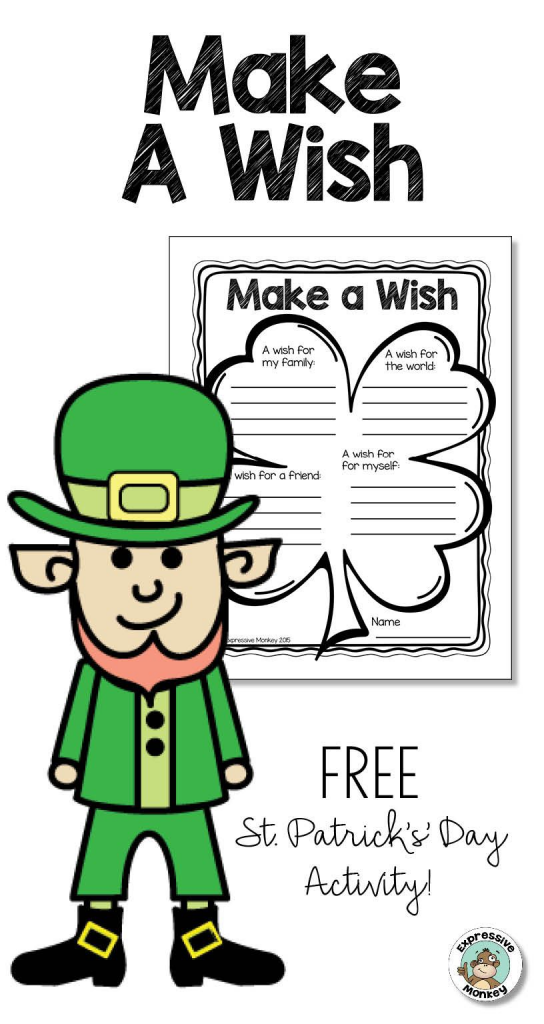
#4 Storytelling – Celebrate you
“Celebrate you” will be like a ritual to cheer the kids up. To celebrate, you must have something that happened before, so children learn the process. No one refuses to celebrate with them, so why not give them some encouragement no matter what they have done?
It’s more about reading and listening, but you have to make it with a festive attitude. By experiencing the excitement, children remember the event and relating content more deeply. Here, let’s leave them a blank space to write down the quality they like about themselves. It’s vital that you naturally conduct the process, so children volunteer to share and eager to listen to your suggestions.

#5 Manners at school
Now, let’s move on with more life lessons that everybody cares about. Manners are a way to express characters, so this worksheet means a lot. It’s practical to connect the work to tight spaces like schools, restaurants, home, relative’s, parks, etc. You can always make it large. But before brainstorming the next topic, let’s plan what to put on the sheet.
For kindergarten, it’s necessary to minimize texts and maximize images. Children like to interact with color and shapes, so keep that in mind. Let’s make it more about multiple choices, coloring, and discussion rather than reading. When you make it well, children know about appropriate manners, how to get them, and what to avoid. Critical thinking is well promoted here, too.

#6 Kindness certificate
We cannot introduce the whole character world to children, no matter which grade they are in. However, we can do some awards to praise good characters. Like kindness, you can give them a certificate.
This worksheet needs almost physical work from children but their thoughts. When in a group, some people get praised, and others don’t will seed for questions. Curiosity plays a vital role in building up knowledge. When children start questioning, teachers explain how to get an award by telling good characters and behavior. The sheet must carry the same content since they want to memorize, and parents at home can educate.
There are many good characters for you to replace kindness, such as creativity, generosity, frankness, and helpfulness. Let’s make it viral since people love fame.

#7 Character traits graphic organizer
The creation of traits will be a practice to show how children think about characters. Making them work with color and creativity is a good idea to picture such abstract subjects as characters.
The worksheet includes a page for instructions and several pages to develop the idea. It’s for individuals to work alone, which students can complete at home or on holidays. There are no limitations on using decorations to form the traits they like, but texts help because it’s so abstract. Each sheet includes blank spaces to write down an explanation. Again, you must take this chance to help them improve with vocabulary and grammar.

#8 Martin Luther King Jr
When picturing themselves and friends start showing downward excitement, changes in targeted traits may turn the table.
Martin Luther King Jr worksheet illustrates a big campaign on a historical subject. The sheets will carry information, quotes, words, and search requirements. It will be too much as homework, so we recommend this worksheet for a holiday, for example, Martin Luther King Jr Holidays.
Working with a focused character with words related will make an impression on children. Rather than that, these people are famous among their community to keep up with searching and listening easily. You can change the character if you want.

#9 Kindness rules: Kindness Sort
This worksheet acquires integrating skills. Children must learn the word, understand, and memorize them, then judge them. It doesn’t sound effortless but happens naturally to kindergarten kids.
The point is not introducing too much vocab on behavior. You have to pick only several but evenly pick from excellent and bad expressions so that they can make a judgment on each. Let them sort the behavior out according to responding to the given character and against.
It’s an appropriate way for children to be aware of expression. They are supposed to gain a deep understanding of the given character and a lot of fun. We suggest making it group work so children can exchange viewpoints.

#10 Friendship at school
If you are going to conduct this worksheet, do it at the beginning of the course. The content is to tell children ways to make friends and how to behave with friends. There should be all about learning appropriate personalities and eliminating malicious behavior.
Please don’t make it an individual or pair work since it can involve the whole class speaking up. For kindergarten, it’s essential to present with cute demonstrations and the least texts. Let children work up their minds on building up their best friend’s portrait.
You can change the topic into building up other traits like teachers, moms, and dads. It’s always good to hear about student’s thinking so we can get close to them.

#11 Bucket filler
After making friends, it must be time to say something great about them. You can start encouraging students to do little cards to send their friends with compliments. This worksheet is simple to make and should be conducted with privacy.
Let children write down names they want and comment they would like to make. It’s easier that way. The excellent point about these sheets is minimum in texts. Participants need to fill in only character words under the name of the person. The sheet makes changes in expression so that children can use up their vocabulary.

#12 comic: Superheroes and drug
Superheroes and drugs is a worksheet with the content of a short comic. The effects of cartoons on children’s behavior are undeniable since characters are superficial buddies. So why don’t you keep up on that thought?
This worksheet lets children build up a superhero’s trait according to the characters they learned. Based on a given plot, they have to worship the one they adore. Don’t make it complicated but acquire children to fill in only single words.
The comic then goes home with the children and is on the wall. They will see what they have continuously made then remember the idea. You are successful in convincing them effortlessly.

Older kids
#1 making resolution – kindness resolution
Kindness resolution is a worksheet that proposes the meaning of the character and how to express them into society. The worksheet contains information that the teacher must explain to learners and the practice that comes along with a report.
It should look like a journal containing interacting questions and constructive proposals to get bored or lost. It may include a wall of text but in short sentences.
The worksheet promotes learning through practice, which will help people to understand the character for longer. It’s more an individual job that students can self-evaluate, and we find it applicable for even kindergarten. It’s recommended to add illustrations for smaller kids.
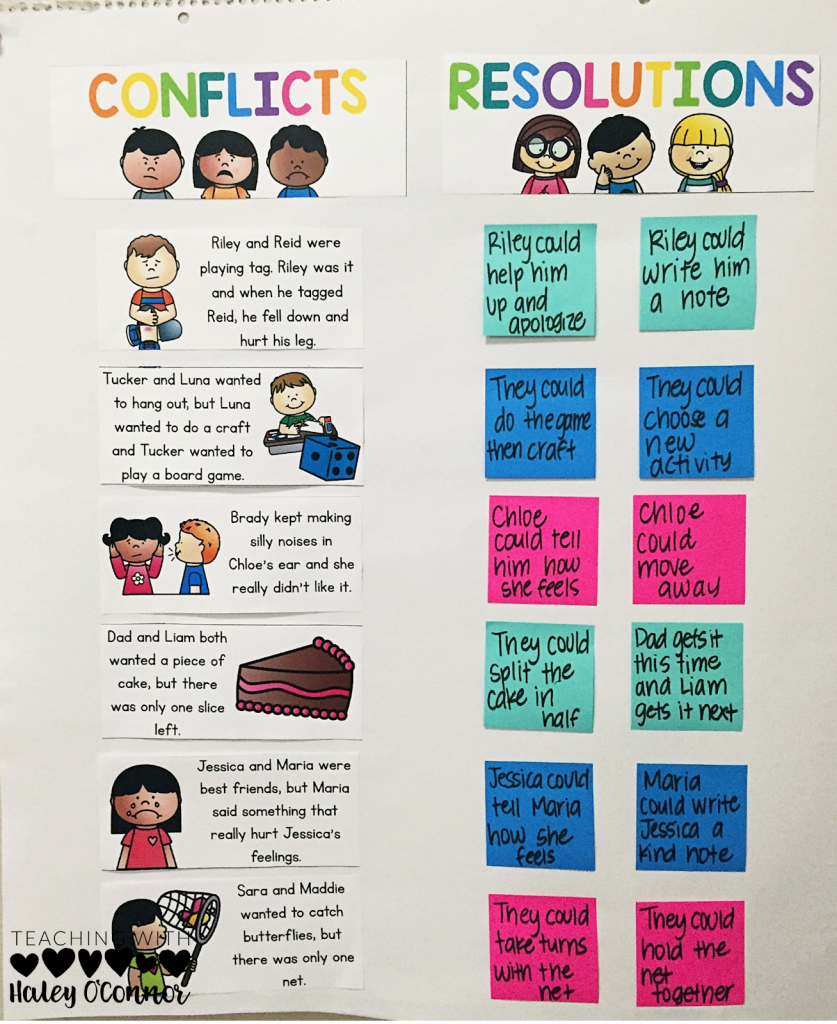
#2 Character description
Self-esteem is a character that is easily confused with being selfish if we don’t teach that well. Usually, we introduce the term for those who attained some ideas about characters and competence in classifying excellence and evil. This worksheet is to conduct such complicated feelings.
Character description requires more academic contributions, so, better with kids in grade 5th and above. However, the design remains attractive with layouts and stickers.
There are three parts: targets, posters, and worksheets that are all for practicing a character. The content introduces it as a kind of campaign or challenge. We believe it might draw more attention and engagement that way.
It’s significant work, and students must have enough time to plan and carry on their plan. The teachers must make sure students know what to do and what not to before the challenge gets set. The activity could be for a holiday or a big project as students need to evaluate their characteristics.

#3 How to behave – Manners at Table
Manners at the table continue the series of how to behave, but space now appears publicly and more complicated. It would be better to leave the Manners at Table for children older than kindergarten as growing awareness.
Here they learn to behave with strangers and in public. Teachers should start with everyday things like eating some foods, necessary jobs to do, and showing respect. It’s required to lead them to step by step to be polite and elegant but not sound like a stiff procedure.
The worksheet looks fine for group work where children can discuss and exchange experiences. Or, individual reports would be adequate, too, as participants have time to look back to themselves.

#4 Citizenship reading passage
Let’s say Sam’s First Day is a role model to build a trait. Students will make their imaginary friends the way they want with characters they feel comfortable with. As a teacher, you must have some instructions on the questions and guidelines for good manners.
The worksheet acquires reading skill and analysis work but not too complicated. You can propose questions in different forms such as tables, multiple-choice, list, blank filling, etc. so that children don’t get bored during the process.
It should be single work if you want to reflect on the student’s behavior. Then, it can come into discussion among the class.

#5 Discussion
Debate or discussion always has a strong effect in forming memories. You will remember things better if you try hard to protect the idea from the opposite. This worksheet is based on that excuse.
Remember that only students from grade 7th gain enough qualifications to carry this worksheet. It will be a smoky job.
It’s an a-page sheet that should happen among three students and above as you need different ideas. The more students, the more exciting the discussion would get. There are controversial behaviors, for example, helping drug dealers instead of punishing them.
Since students have their own opinion about their surroundings, they will express different looks at that problem. The debate is to gain a more profound sense of character and bring a vague feeling to light.
It’s not that every student at high school will find this worksheet attractive. Discussion may be arousal to only active students, so if you bring that to the silent group, it is awkward to make them say.

#6 Quick Quotations- Nelson Mandela
Famous characters have their manners accepted by the whole world. As a result, we can make them an example for teaching ideologies and characteristics. This worksheet talks about Nelson Mandela.
The worksheets include famous quotes by him and put children into thinking. They must see the meaning behind and explain why to think so. There is no concrete way to evaluate which is the right or wrong answer. The exercise is more to reflect and express. Teachers can join in and guide to develop opinions but don’t intervene powerfully.
You can base on any famous person in your society to build the worksheet. The more prominent the character is to students, the more they will be engaged. It sounds like an excellent discussion in class, as well as an adequate reflection at home.

#7 Red ribbon week
Red ribbon week promotes the idea of a campaign that students should complete a small promise to themselves. For example, this worksheet proposes a pledge to be drug-free.
It’s good to practice good character but even more important not to practice bad habits. As a result, we need things like this worksheet. It makes children look at something and consider it immoral to build a promise to carry on. During the process, they will learn reasons and spread the idea to the people around them. Teaching is a way to remember things, so this worksheet will somehow do the job.
You can change the character into something else, depending on society’s value. Student’s interest is an excellent source to work on, such as K-pop, early make-ups, and so on.

#8 Lewis and Clark
Looking at history is an excellent way to help children aware of character. Lewis and Clark were in sleepy history lessons, but now they come back vividly like two symbols for such a cool portrait.
We are not going to learn everything about them, but a little quick look at their achievement. Students will look at these two through the great things they had done for the country and learn something. Teachers should try to make the purpose chilling and straightforward so that participants don’t feel like they are attending another history class. It’s crucial to pick characters they are popular with, and you can leave behind a brief introduction. Beloved characters from comics or fork tales seem to be a good idea, too.

#9 my mouth is a Volcano
“My mouth is a Volcano” advises a candid look at what people said. The worksheet makes them think about the unappreciated saying they’ve made and come up with alternatives. This way is straightforward and transparent so that students cannot think around. We recommend that participants work on it individually because bad manners are sensitive to exposure.
You can apply it to self-reflect hours and to people who make excuses for what they did wrong. Sometimes, it’s necessary to make them face the mistake directly and propose the solution to fix it immediately.

#10 Differentiate – rude and mean and bullying
Characters consist of different shades, and for society, some shades are not bad enough to be boycotted while some are unacceptable. For example, we usually mistake rudeness, meanness, and bullying. Children could make the same mistake, so they should know how to differentiate as early as possible.
Rude, mean, and bullying propose the same character but on different levels. While rude and mean are not encouraged but still accepted as personalities, bullying is somehow illegal. The worksheet is to help learners to know the differences by looking at some categories. Firstly, it comes up as a survey. Then the teacher must explain the level.
The worksheet will mean a lot in building up children’s characteristics. Conflicts and rudeness may not come from mean thoughts but antisocial personalities. However, bullying and teasing positively affect other people, and those who do so need some advice. It’s never too early to show children justice.

#11 Friendship activities
Friendship activities propose ways to be friendly. The worksheets include flashcards, creative poems, and cards to cut out. First of all, the teacher introduces the flashcards and tells the meaning behind it. It would help if you consisted of negative and positive behaviors to help children enhance their critical thinking. Then, students will practice showing their friends how they think about social actions. It’s a great bonding activity, as well as an excellent worksheet to finish in class.
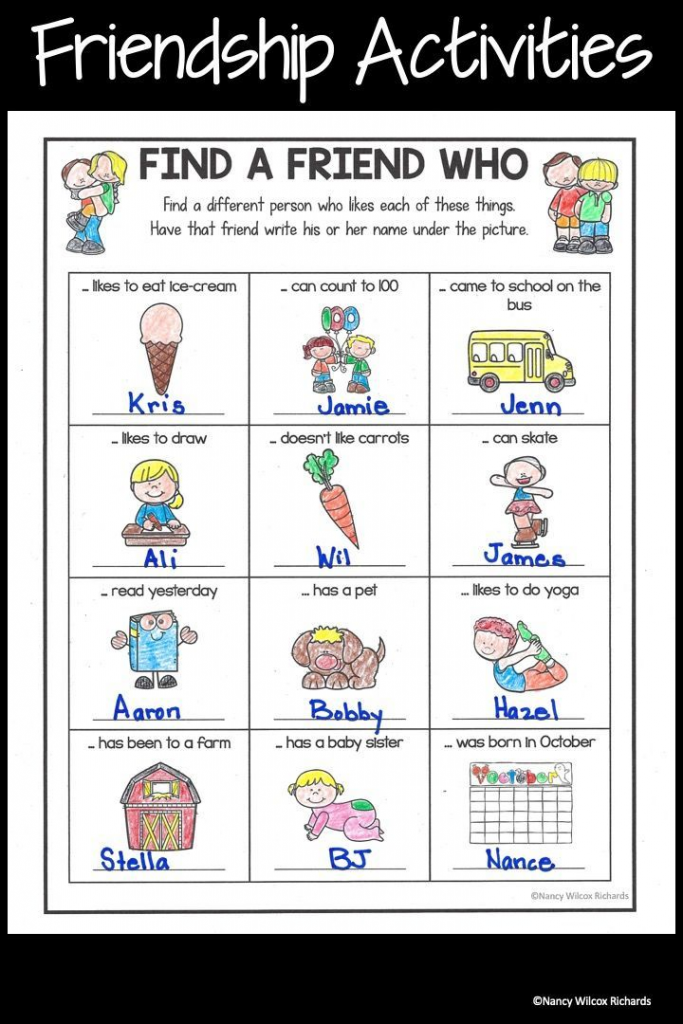
#12 Changing Negative Self-talk to Positive
This worksheet is the same as “my mouth is a Volcano,” but more academically. There are no illustrations so that you can make it in no time.

#13 make a trait
Make a trait because the worksheet includes many characters where children must decide good or bad one in some orders. It’s like a revision that children can take before tests or after holidays.

#14 against bad character/ behavior
This worksheet turns children to be a hero since they can capture bullying in classrooms. They must know about this toxic character before deciding to charge. It’s another “learning from doing”. The worksheet is about reporting the process.

#15 my bubble of control
My bubble of control requires children to observe and reflect. They have to classify different behaviors and decide what is in or out of the control zone. It’s an excellent way to speak to children and solve their problems.

#16 Weekly goal
Who doesn’t love dramas? Even children find it exciting when we put them in challenges. The majority want to win the task to devote a sufficient amount of time to complete the lesson. This worksheet aims to maintain the interest for a long time and develop their attentive attitude to the courses.
Weekly goals draw a task about observing their behaviors and develop personal characters. The weekly goal report will help to make sure they do what you asked. This worksheet contains requirements for planning, description, and rating. There is a little notice that it works better with ones who are partly aware of the characters. And, now is the step to help them make affirmations on good or destructive behaviors.

#17 Behavior thinking sheet,” FREEBIE.”
It’s essential to know about expression before defining character. Therefore, this worksheet makes a beautiful prep work for the way ahead.
The behavior thinking sheet encourages students to think about others’ activities, and expressions then name after them. It’s a fundamental recognition to make, and people should know these in the early days. Since the worksheet contains many texts, it’s preferable to 2nd grade and above.
When preparing, don’t forget to illustrate some pictures. The blank text with given words is meant for children to write down their thoughts on those vocabularies. Whatever approach you take, be careful not to turn the lessons into oppression. It’s still a free worksheet so that children can speak their thoughts.

#18 Positive character traits of the week
Sometimes, it’s important to stir up a peaceful atmosphere through competitions. Positive character traits of the week worksheets are for individuals but within a class. It helps children to put what they’ve learned into practice, observe, and record the process of expressing the characters.
Only positive character traits get praised, so they will know what is appropriate and what’s not. These sheets will appear in lots of texts, but you can boost excitement by changing questions and adding some decorations. Don’t forget to tell children the instructions, rules, and awards if you have.
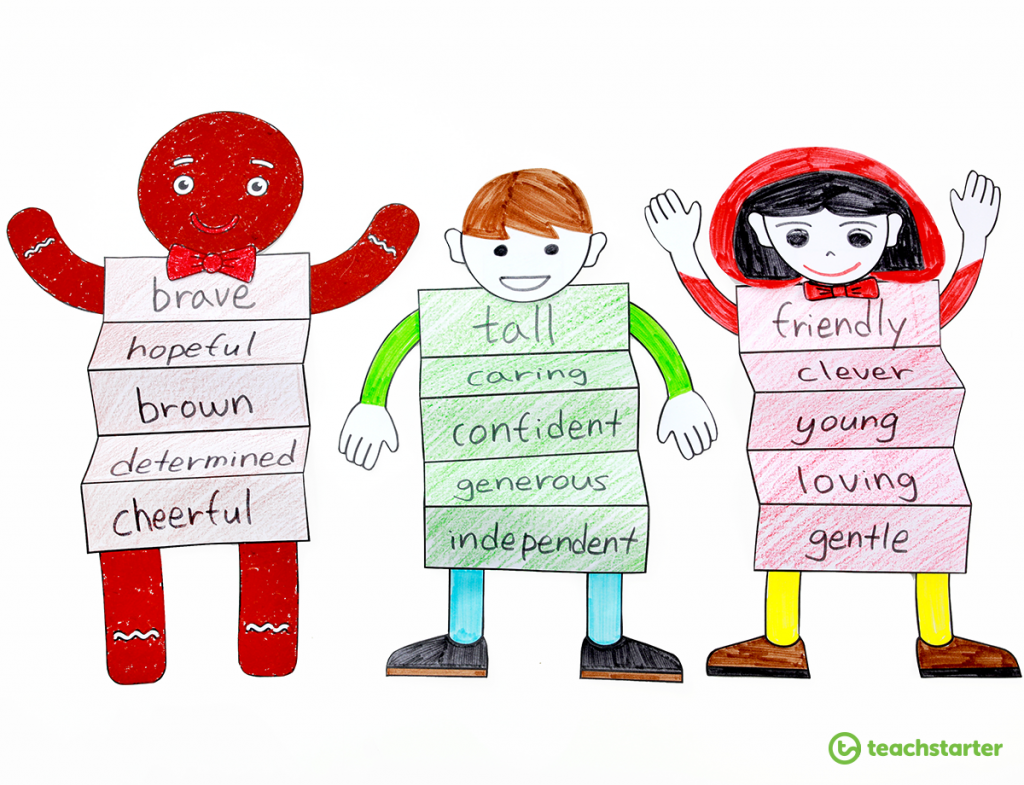
Frequently Asked Questions
How old should students learn about the characters?
Ideas about characters and opinions on them should enter the children’s view as soon as possible. At 4, children can read comics and remember some details, not necessarily words. By doing so, they form their opinions about their surroundings. Your intervention in building early recognition for them is essential.
Where can I get the sheets?
You can go to forums or platforms of teachers to get these sheets for free. Remember to check the source about policy and keep track of authors who help your work.
Will the sheets be enough to describe?
The sheets are not the complete message to children about what they should learn. Character is an abstract subject, and we usually have no way to describe it exactly. Sheets must come along with verbal expression, example, and coming-along support. By only so, children can get an overview and deep meanings.
How can I deliver the sheet?
There are many ways to deliver the sheet to children. You can make it like a discussion, competition, homework, holiday practice. The way you group them can also bring different effects. For example, individual work usually seems more objective than group work.
Final words
Free character education worksheets are many to reach. However, the worksheet is just an idea, and you have to carry on with your creativity. Adjustments are necessary regarding a group of children, personalities, ages, and purposes. There is no exact formula in teaching, especially in such intangible subjects like character. Wish you a lot of luck!

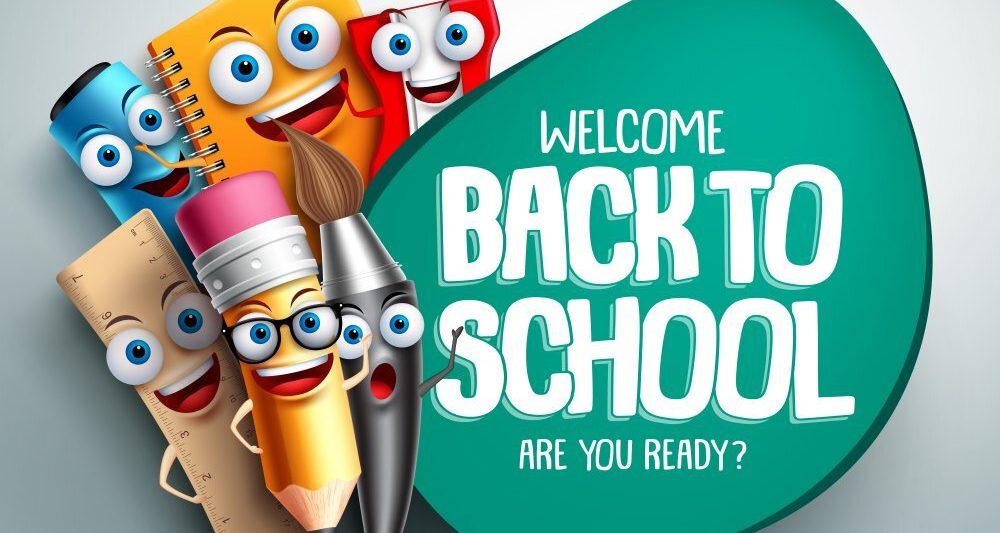
 Summer Science Experiments and STEM Activities – Top 30 Ideas and Science Guides
Summer Science Experiments and STEM Activities – Top 30 Ideas and Science Guides
Leave a Reply